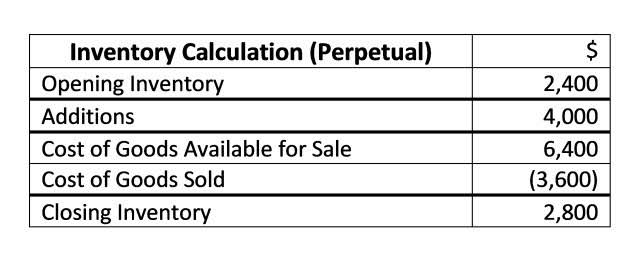
DOE estimated around 10 percent of the total 20 to 55 gallon electric storage water heater market to be low boy water heaters. DOE assessed that many of these installations would require significant installation costs in order to install a heat pump water heater. DOE notes that at the proposed standard, most models currently serving the small electric water heater market will remain available.
Energy Conservation Program: Energy Conservation Standards for Consumer Water Heaters
Inputs to the calculation of total installed cost include the cost of the product—which includes MPCs, manufacturer markups, retailer and distributor markups, shipping costs, and sales taxes—and installation costs. Inputs to the calculation of operating expenses include annual energy consumption, energy prices and price projections, repair and maintenance costs, product lifetimes, and discount rates. DOE created distributions of values for product lifetime, discount rates, and sales taxes, with probabilities attached to each value, to account for their uncertainty and variability. In the July 2023 NOPR, DOE requested feedback on the analysis assumptions used to estimate shipping costs for consumer water heaters. DOE’s analysis for efficiency levels above baseline is discussed in more detail in chapter 5 of the final rule TSD. Efficiency levels, including baseline and higher efficiencies, across all product classes are listed in the tables that follow.

How to Calculate Gross Profit Margin
In response, DOE acknowledges that manufactured homes and small homes typically have greater challenges in installing a heat pump water heater. Installing a heat pump water heater in such homes may require additional installation costs, as described above, more so than an average single-family home. However, in many cases, such homes can utilize a small electric storage water heater instead of a heat pump water heater, significantly reducing their total installed cost. In terms of the cooling effect of the heat pump module, DOE took that into account in its energy use analysis the additional heating it might need in compensation, as discussed in section IV.E.3 of this document. DOE acknowledges that for low income homeowners, higher installation costs would indeed need more years of energy savings to pay back or may even lead to net cost, and this is accounted for in the overall LCC results. For renters, since they won’t bear the first cost, it will more likely be economically beneficial (as discussed in section IV.I.1 of this document).
- Such approach is neither arbitrary nor capricious; it is informed by the available data.
- The average net profit margin for general retail sits at 2.65%, while the average margin for restaurants is 12.63%.
- As sales volume increases, the fixed cost component is fully covered, leaving more sales to flow through as profit.
- DOE’s use of EIA State-level data effectively averages overall consumer sales in each State, and so incorporates information from all utilities.
- (42 U.S.C. 6295(s)) The DOE test procedures for consumer water heaters appear at title 10 of the Code of Federal Regulations (“CFR”) part 430, subpart B, appendix E (“appendix E”).
- If a business converted all current assets into cash and used the cash to pay all current liabilities, any cash remaining is working capital.
- Even if overall deductions were to decrease as a result of the rule, those savings could be easily invested in other parts of the business in order to have no net impact on a business’ tax burden.
Additional Resources
In contrast, the PBPs presented in section V.B.1.a of this document were calculated using distributions that reflect the range of energy use in the field. The quantitative part of the MIA primarily relies on the GRIM, an industry cash flow model with inputs specific to this rulemaking. The key GRIM inputs include data on the industry cost structure, unit production costs, product shipments, manufacturer markups, and investments in R&D and manufacturing capital required to produce compliant products. The key GRIM outputs are the INPV, which is the sum of industry annual cash flows over the analysis period, discounted using the industry-weighted average cost of capital, and the impact to domestic manufacturing employment. The model uses standard accounting principles to estimate the impacts of more stringent energy conservation standards on a given industry by comparing changes in INPV and domestic manufacturing employment between a no-new-standards case and the various standards cases. To capture the uncertainty relating to manufacturer pricing strategies following amended standards, the GRIM estimates a range of possible impacts under different manufacturer markup scenarios.
- (4) Electric storage water heaters with measured storage volumes (Vst) less than 20 gallons or greater than 55 gallons.
- It is similar to gross profit margin, but it includes the carrying cost of inventory.
- Weakness at these levels indicates that money is being lost on basic operations, leaving little revenue for debt repayments and taxes.
- Specifically in the case of switching from a GSWH to a GIWH, these costs include upgrading gas lines and replacing the venting.
- Click on any of the CFI resources listed below to learn more about profit margins, revenues, and financial analysis.
- This profitability ratio evaluates the strength of a company’s sales performance in relation to production costs.
(4) Electric storage water heaters with measured storage volumes (Vst) less than 20 gallons or greater than 55 gallons. Table V.2 through Table V.11 show the LCC and https://www.bookstime.com/ PBP results for the TSLs considered for each product class. In the first of each pair of tables, the simple payback is measured relative to the baseline product.
B. Impact on Manufacturers
It accounts for all the indirect costs that the gross margin ignores, as well as interest and tax expenses. This is why the net margin is considered the most comprehensive profitability metric and is very useful alongside gross margin when evaluating a company. The gross margin is the portion of revenue a company maintains after deducting the costs of producing its goods or services, expressed as a percentage. This profitability ratio evaluates the strength of a company’s sales performance in relation to production costs. A company with a high gross margin ratios mean that the company will have more money to pay operating expenses like salaries, utilities, and rent.
The range of the impacts is driven primarily by the ability of manufacturers to recover their compliance costs. DOE estimates that industry must invest $626.2 million to comply with standards set at TSL 6. DOE understands that manufacturers would need to significantly upgrade their facilities to accommodate heat pump technology for ESWHs. Upgrades to produce heat pump electric storage water heaters include expansion of heat exchanger facilities which ratio is found by dividing gross margin by sales? and inclusion of refrigeration charging systems. In addition, manufacturers would need to expand their component sourcing of compressors and more sophisticated controls to produce these more advanced technology products. DOE estimates that manufacturers would need to scale up production of heat pump electric storage water heaters from approximately 3 percent of ESWH sales today (0.14 million units in 2023) to 100 percent of ESWH units in 2030.
